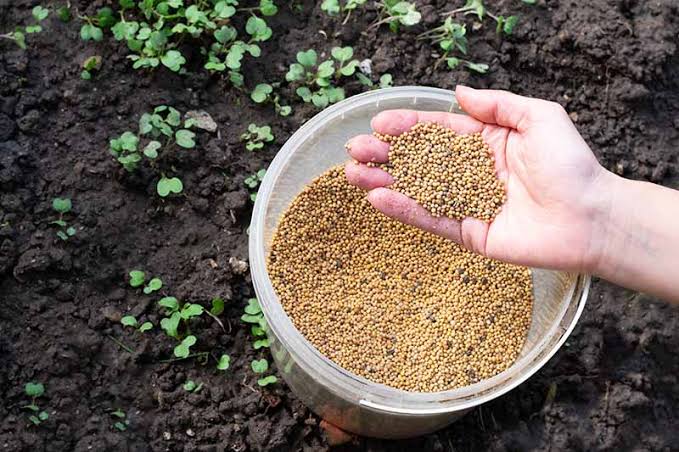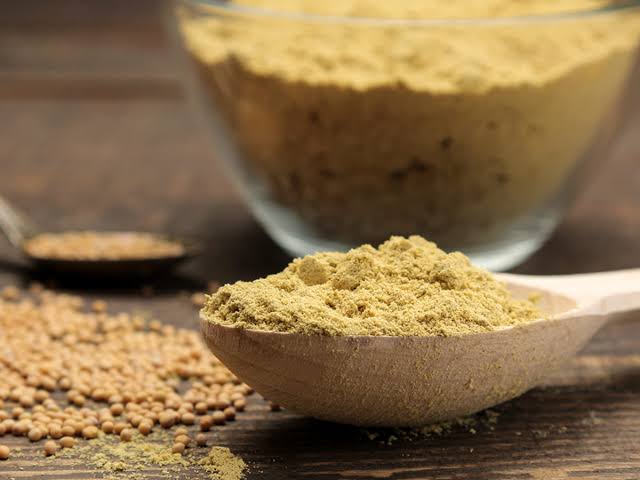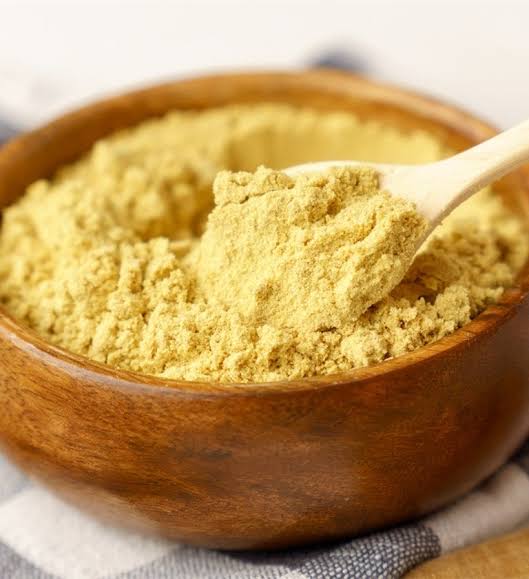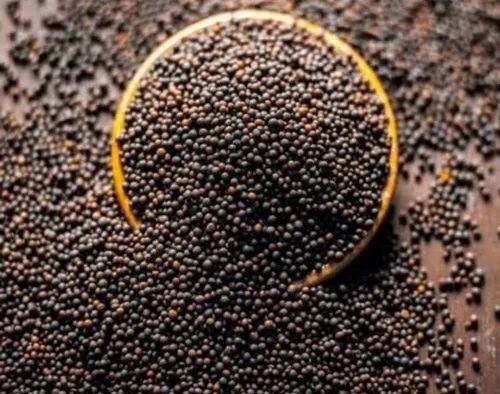Mustard Seeds are tiny, round seeds that come from the mustard plant. They may be small, but they are packed with flavor and have many uses in cooking. Mustard Seeds are commonly used in various cuisines around the world, and they add a unique taste to dishes.
Mustard Seeds come in different varieties, including yellow, brown, and black. Yellow mustard seeds are the mildest in flavor, while brown and black mustard seeds have a stronger, spicier taste. These seeds are often used to make mustard condiments, which are a popular topping for hot dogs, burgers, and sandwiches.
In addition to condiments, Mustard Seeds can be used in a variety of ways in the kitchen. One common use is in pickling and preserving. When Mustard Seeds are added to pickling brine, they provide a tangy flavor and help preserve vegetables like cucumbers and cauliflower. These pickled vegetables make delicious additions to salads and sandwiches.
Mustard Seeds are also a key ingredient in many spice blends and curry powders. In Indian cuisine, for example, they are often used in tempering, where they are heated in oil to release their flavor and aroma before being added to dishes like dal and curry. This process, known as “tadka,” enhances the overall taste of the food.
Furthermore, Mustard Seeds have health benefits. They are a good source of antioxidants and contain essential minerals like selenium and magnesium. Some studies suggest that consuming mustard seeds may help improve digestion and reduce inflammation in the body.
Mustard Seeds are easy to incorporate into your diet. You can sprinkle them on roasted vegetables for added crunch and flavor or use them as a seasoning for grilled meats. Mustard Seed oil is also used in some regions for cooking and has a unique, pungent flavor.
In addition, Mustard Seeds are versatile and flavorful seeds that play a significant role in various cuisines worldwide. Whether you enjoy the mildness of yellow mustard seeds or the spiciness of brown and black mustard seeds, there are many ways to make these tiny seeds a part of your culinary adventures. So, next time you’re in the kitchen, don’t forget to reach for the Mustard Seeds and experiment with their delicious possibilities.
Read Also: How much space you need for your poultry farm
How to Grow the Mustard Seeds

Growing mustard seeds at home is a straightforward process. Mustard seeds are hardy and can be cultivated in various climates. Here’s a simple guide on how to grow mustard seeds:
Materials needed; Mustard seeds, Pot or garden bed, Well-draining soil, Water, Sunlight
Steps
1. Choose a Planting Location: Mustard seeds thrive in full sun, so select a sunny spot in your garden or a location where they can receive at least 6 hours of sunlight per day.
2. Prepare the Soil: Mustard plants prefer well-draining soil with a pH level between 6.0 and 7.5. You can improve the soil quality by adding organic matter like compost.
3. Planting: You can sow mustard seeds directly into the ground or start them in pots or trays indoors if you want to transplant them later. If planting outdoors, sow the seeds about 1/4 inch deep and space them 1 inch apart. If starting indoors, plant the seeds in pots and then transplant them when they have a couple of true leaves.
4. Watering: Keep the soil consistently moist but not waterlogged. Water the mustard plants regularly, especially during dry spells. Water at the base of the plants to avoid getting the leaves wet, which can lead to disease.
5. Thinning: If you’ve planted mustard seeds densely, thin them out when they reach a few inches in height. Leave about 3-6 inches of space between each plant to allow for proper growth.
6. Fertilization: Mustard plants don’t usually require heavy fertilization. However, you can provide a balanced, all-purpose fertilizer if the soil lacks nutrients. Follow the fertilizer package instructions for application rates.
7. Pest and Disease Management: Keep an eye out for common garden pests like aphids or flea beetles, which can affect mustard plants. Use organic pest control methods or insecticidal soap if necessary. Proper spacing and good air circulation can also help prevent diseases.
8. Harvesting: Mustard leaves can be harvested when they reach the desired size, usually around 3-6 weeks after planting. You can cut the leaves near the base, leaving a few inches to allow for regrowth. For mustard seeds, allow the plant to mature fully. The seed pods will turn brown, and the seeds will become firm. Harvest the pods before they split open, usually around 80-90 days after planting.
9. Saving Seeds (Optional): If you want to save mustard seeds for future planting, allow the seed pods to dry on the plant. Once they are dry, remove the pods, and extract the seeds.
10. Enjoy Your Mustard Greens or Seeds: Use harvested mustard greens in salads or cooked dishes. Mustard seeds can be used in cooking or ground into mustard powder for condiments.
Growing mustard seeds is a rewarding experience, whether you’re interested in the leaves or the seeds. With proper care and attention to detail, you can successfully cultivate mustard plants in your garden or on your balcony.
10 Benefits of Mustard Seeds
Mustard seeds offer several benefits when incorporated into your diet and daily life. Here are 10 potential advantages of consuming mustard seeds:
1. Rich in Nutrients: Mustard seeds are a good source of essential nutrients like vitamins (such as vitamin A, C, and K), minerals (including calcium, magnesium, and phosphorus), and dietary fiber.
2. Antioxidant Properties: Mustard seeds contain antioxidants like selenium and zinc, which help protect cells from oxidative damage and reduce the risk of chronic diseases.
3. Heart Health: The omega-3 fatty acids in mustard seeds may support heart health by reducing inflammation and lowering the risk of heart disease.
4. Digestive Aid: Mustard seeds can aid digestion due to their fiber content. They may help prevent constipation and promote healthy bowel movements.
5. Anti-Inflammatory: Mustard seeds contain compounds that have anti-inflammatory properties, potentially reducing inflammation and associated discomfort.
6. Weight Management: The fiber in mustard seeds can contribute to a feeling of fullness, potentially aiding in weight management by reducing overeating.
7. Bone Health: Mustard seeds contain calcium and magnesium, which are essential for strong bones and may help prevent osteoporosis.
8. Respiratory Health: Mustard seeds have been used traditionally to relieve respiratory congestion and symptoms like coughing and chest congestion.
9. Skin Health: The presence of vitamins A and C in mustard seeds may promote healthy skin by supporting collagen production and reducing the signs of aging.
10. Flavorful Condiment: Mustard seeds are a versatile condiment and can be used to add flavor and zest to a wide range of dishes, from salads to marinades and dressings.
It’s important to note that while mustard seeds have these potential benefits, individual responses may vary, and they should be consumed as part of a balanced diet. If you have specific health concerns or dietary restrictions, it’s advisable to consult with a healthcare professional or nutritionist before making significant changes to your diet.
7 Uses of Mustard Seeds
Mustard seeds have a wide range of culinary uses and can add flavor and depth to various dishes. Here are seven common uses of mustard seeds:
1. Mustard Condiments: Mustard seeds are the primary ingredient in making mustard condiments. Yellow, brown, or black mustard seeds can be ground and mixed with other ingredients like vinegar, water, and spices to create various types of mustard, such as Dijon, yellow mustard, or whole grain mustard.
2. Pickling: Mustard seeds are often used in pickling recipes. When added to pickling brine, they contribute a tangy flavor and help preserve vegetables like cucumbers, onions, or cauliflower. These pickled vegetables make delicious condiments or side dishes.
3. Tempering in Indian Cuisine: In Indian cooking, mustard seeds are frequently used for tempering, a technique where they are briefly heated in hot oil to release their flavor and aroma. This tempered mixture is then added to dishes like dal (lentil soup) and various curries, enhancing the overall taste.
4. Spice Blends: Mustard seeds are a key ingredient in many spice blends and seasoning mixes. They add a distinctive flavor and a hint of spiciness to spice blends like curry powder and garam masala, which are used in a wide range of dishes.
5. Marinades and Dressings: Mustard seeds can be crushed or ground and used in marinades for meats, poultry, and seafood. They can also be incorporated into salad dressings to add depth and a zesty kick to salads.
6. Flavoring Roasted Vegetables: When sprinkled over roasted or grilled vegetables, mustard seeds add a pleasant crunch and a mild, nutty flavor. They pair well with root vegetables like potatoes, carrots, and parsnips.
7. Homemade Condiments: You can create your own homemade condiments using mustard seeds as a base. Experiment with different flavors by adding herbs, spices, or sweeteners to make unique sauces or spreads.
These are just a few examples of the versatile uses of mustard seeds in the culinary world. Their ability to enhance flavor and texture makes them a popular choice in various cuisines and dishes.
Read Also: Disease Prevention and Health Management for Rabbits
Dry Mustard

Dry mustard is a special spice made from tiny mustard seeds. These seeds are small, round, and come in different colors like yellow, brown, or black. When they are dried and ground into a fine powder, they become the flavorful spice we call dry mustard.
Dry mustard is known for its strong, tangy flavor. It adds a zesty kick to your food. Imagine a combination of spicy and slightly bitter taste – that’s what dry mustard brings to your dishes.
Versatile in Cooking:
Dry mustard is very versatile. You can use it in many types of dishes. It’s a must-have in every kitchen because it can make your food taste better in different ways. Here are some of the uses:
1. Sauces and Dressings: Dry mustard is often used to make tasty sauces and dressings. Just a pinch of it can turn a bland sauce into something special. Many salad dressings, like honey mustard, use dry mustard to give them that extra flavor.
2. Meat and Fish: If you like grilling or roasting meat and fish, dry mustard can be your secret ingredient. Mix it with other spices, rub it on your meat, and let the flavors come alive.
3. Pickles: Ever tried making your own pickles at home? Dry mustard can be a great addition to the pickling spice mix. It gives a unique taste that you won’t find in store-bought pickles.
4. Sandwiches: Add a bit of dry mustard to your sandwich spreads, like mayonnaise or butter, for a delightful twist. It can make your ordinary sandwich taste extraordinary.
Health Benefits of Dry Mustard
Besides its fantastic taste, dry mustard also has some health benefits. It contains antioxidants and minerals that are good for your body. Here are a few health benefits:
1. Digestion Aid: Dry mustard can help with digestion by increasing the production of digestive juices. It’s like a little helper for your stomach.
2. Anti-Inflammatory: Some studies suggest that mustard seeds, which are used to make dry mustard, have anti-inflammatory properties. This can be helpful for reducing inflammation in your body.
3. Heart Health: Mustard seeds are also rich in nutrients that can be good for your heart. They may help in lowering blood pressure and improving overall heart health.
Even though dry mustard is wonderful, use it in moderation. A little goes a long way because of its strong flavor. Too much can overpower your dish and make it too spicy.
However, dry mustard is a simple but powerful spice that can transform your cooking. It’s easy to use, adds a unique flavor to your food, and even offers some health benefits. So, next time you’re in the kitchen, don’t forget to sprinkle a pinch of dry mustard for that extra punch of taste.
Ground Mustard

Ground Mustard is a spice made from crushed mustard seeds. It has a strong flavor and is used in cooking to add a zesty kick to many dishes. People have been using ground mustard for a long time because it tastes so good.
When you make Ground Mustard, you start with mustard seeds. These seeds come from the mustard plant, which has yellow flowers. Once the seeds are harvested, they are dried and ground into a fine powder. This powder is what we call Ground Mustard.
One of the things that makes Ground Mustard special is its spicy taste. It can be a little hot, like a tiny fire in your mouth, but it’s also flavorful. People often use it in sauces, salad dressings, and even on sandwiches. It’s like a secret ingredient that makes food taste better.
Ground Mustard isn’t just tasty; it’s also good for you. Some people believe that it can help with digestion and boost your metabolism. Plus, it has vitamins and minerals that are good for your body. So, when you sprinkle Ground Mustard on your food, you’re not just making it taste better; you’re also giving your body a little extra love.
Another great thing about Ground Mustard is that it’s easy to use. You don’t need to be a fancy chef to enjoy it. Just sprinkle a little on your favorite dishes, and you’ll instantly add some extra flavor. You can even mix it with other spices to create your own special seasoning blend.
In some places, people even use Ground Mustard to make a kind of paste called “mustard” that you can spread on sandwiches or dip your pretzels into. It’s a classic condiment that’s loved all around the world.
So, the next time you are cooking up something delicious in the kitchen, don’t forget about Ground Mustard. It’s a simple spice with a big flavor, and it can turn an ordinary meal into something extraordinary. Give it a try, and you’ll see why people have been enjoying it for centuries.
Spicy Mustards
Spicy mustards are a type of mustard sauce that contains a fiery punch of heat and flavor. These mustards are made by adding spicy ingredients like hot peppers or spices to the traditional mustard base. Let’s dive into the world of spicy mustards.
Spicy mustards come in various heat levels, from mildly spicy to scorching hot. The level of spiciness often depends on the types of chili peppers or spices used during the production process. Some popular varieties of spicy mustards include:
1. Dijon Mustard: This classic French mustard is known for its bold and tangy flavor. Dijon mustard can have varying levels of spiciness, but it generally has a moderate kick. It’s a versatile condiment that pairs well with sandwiches, sausages, and salad dressings.
2. Brown Mustard: Brown mustard, also known as whole-grain mustard, is made from coarsely ground brown or black mustard seeds. It has a spicier and more robust flavor compared to yellow mustard. Brown mustard is often used in deli-style sandwiches and as a condiment for roast meats.
3. Hot English Mustard: Hot English mustard is famous for its intense heat and sharp, pungent taste. It’s made from a combination of brown and white mustard seeds and is commonly used in British cuisine, especially with roast beef or sausages.
4. Spicy Dipping Mustards: Some specialty mustards are specifically crafted for dipping sauces. These may include ingredients like horseradish, jalapeños, or other hot peppers, resulting in a fiery and flavorful dipping experience.
5. Honey Mustard with a Kick: Honey mustard with added spices or hot sauce creates a sweet and spicy combination that’s perfect for dipping chicken tenders or pretzels. The sweetness of honey balances the heat of the spices.
6. Asian-Inspired Spicy Mustards: Some Asian cuisines feature spicy mustards as well. Chinese-style hot mustard, often served with dim sum or egg rolls, is known for its sinus-clearing spiciness.
Spicy mustards are not only delicious but also versatile in the kitchen. They can be used as condiments, marinades, glazes, or dipping sauces, adding an exciting dimension to your dishes. Whether you enjoy a subtle heat or crave the intense burn of spicier varieties, there’s a spicy mustard to suit your taste buds. So, the next time you’re looking to add some zing to your meal, consider reaching for a jar of spicy mustard to give your taste buds a thrilling ride.
Black Mustard Seeds

Black Mustard Seeds are small, dark seeds that come from a plant. These seeds are special because they add a strong and spicy flavor to food. People like to use them in cooking for a long time because they taste so good.
When you have Black Mustard Seeds, you have tiny round seeds that are dark brown or black. These seeds have a bold and spicy taste. To use them, you can crush or grind them into a powder. This powder can make your food taste really spicy.
People use Black Mustard Seeds in different parts of the world. In India, they use them in pickles, chutneys, and curries to make the food more flavorful. Some people even use them in spice blends. When you cook with Black Mustard Seeds, they can make your dishes taste exciting and hot.
These little seeds are also good for you. Some folks believe they can help with digestion because they have healthy things in them. When you eat food with Black Mustard Seeds, you might get some extra goodness for your body.
If you want to grow Black Mustard Seeds, you can do it in many places because they like different climates. They grow pretty yellow flowers and then make seeds. People harvest these seeds when they are all dried up and brown.
So, the next time you are cooking and want to add a nice taste to your food, remember Black Mustard Seeds. They might be small, but they have a big taste that can make your meals extra delicious. Whether you use them in Indian dishes, spice blends, or even pickles, these seeds are a simple way to add some spicy excitement to your food.
Read Also: 5 Ways to Dispose Old Clothes (Used Clothes)
